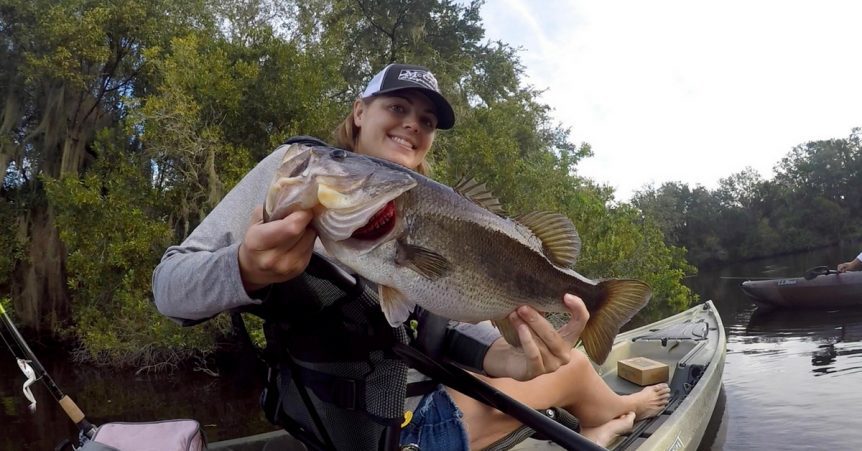Shallow Summer Hot Water Fishing
Shallow summer fishing around matted aquatic vegetation is probably the easiest spot to find bass on any given lake, but it is also the toughest cover to penetrate and haul out bass from their weedy hideouts.
You can catch bass from grass year-round, but the best time to target bass in hydrilla and milfoil is from the dog days of summer throughout the fall. The grass is thickest then so it allows more bass to congregate under the mats.
Weather Changes And Shallow Summer Fishing
Weather plays a key role in where bass position in the matted vegetation during the dog days. If it is cloudy or windy, the fish will hold loosely on the edge of the weeds where they are more susceptible to action lures such as spinnerbaits, crankbaits and bladed jigs. Calm, sunny weather is preferred for flipping and pitching to bass congregating in the thickest part of the mats.
Openings in the mats, indentions and any irregular features in the grass are ideal targets for flipping and pitching. However punching bass baits through the thickest part of the mat produces best since novice anglers tend to shy away from these spots and fish the holes in the grass.
Shallow Summer Fishing In The Mats
You can penetrate the mats with a 3/4- to 1 1/4-ounce jig with a plastic craw trailer. You can also use a plastic craw or other soft plastics on a Texas rig if you want to give bass a different look in weeds receiving heavy fishing pressure.
Pitch your jig or Texas-rigged soft plastic bait on a 7-foot, 9-inch heavy-action rod rather than a standard 7 1/2-inch flipping stick to get more leverage when trying to get a bass out of the grass. Your line choice for pitching in the weeds should be 50- to 60-pound braid in low visibility green.
After punching your jig through the mat, let it fall quickly to the bottom. Try to let the bait fall vertically uninhibited by your rod or reel. Once it gets to the bottom take up the slack and then lift it up to see if it feels like whatever size weight you are using at that time. If it feels too heavy set the hook because it is probably a fish on the line. If it feels normal, work the jig up and down until you establish where the fish are located, whether it’s high right below the canopy of weeds or down on the bottom.



